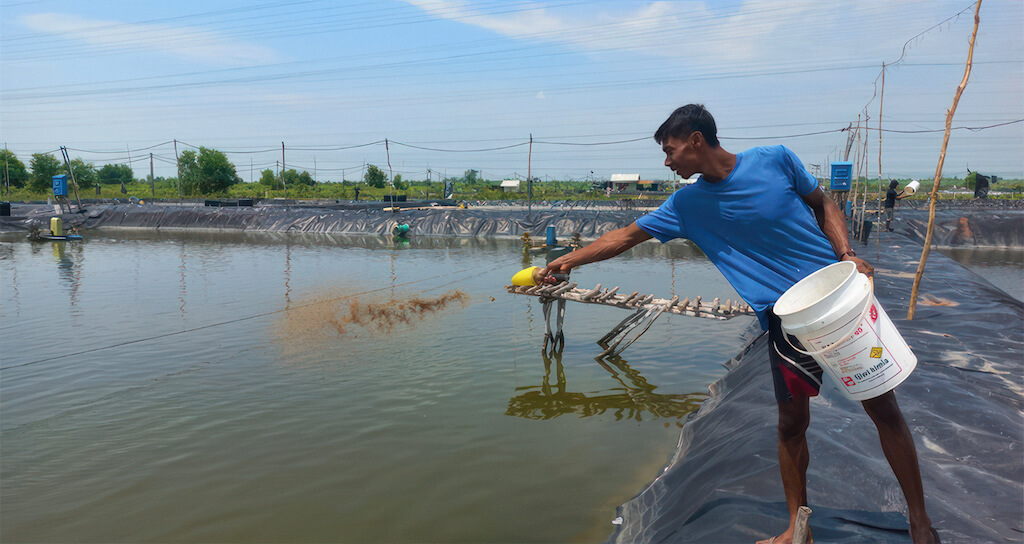A feed additive to reduce the impact of white faeces syndrome
18/04/2023
These trials at a farm in Lampung, Indonesia, cover a large number of ponds with shrimp fed preventive and corrective application levels of the feed additive
By Martha Mamora, Jaka Raharjo, Maria Mercè Isern-Subich and Waldo G. Nuez-Ortín
Feeding at Tambak Udang Babarafi, Indonesia
The rapid growth and intensification of the shrimp farming industry have resulted in the emergence of devastating shrimp diseases. Among them, white faeces syndrome (WFS) is a major cause of crop failures of Penaeus vannamei shrimp farming in Southeast Asian countries, India and China. WFS affects the digestive system of shrimp resulting in production losses due to smaller harvest size from stunted growth and decreased survival rates.
WFS arises because of a series of complex interactions involving the host, pathogen and environment. Outbreaks are associated with changes in environmental conditions and water quality leading to physiological stress and a compromised ability of shrimp to resist infection (Alfiansah et al. 2020). Although the causative agent of infection remains inconclusive, it has generally been associated with pathogenic Vibrio bacteria and the microsporidian Enterocytozoon hepatopenaei (EHP).
Prevention is important to reduce the impact of WFS. A first strategy is pond management measures to maintain water and sediment quality and to reduce the presence of EHP and Vibrio (Tang et al. 2016; Aldama-Cano et al. 2018). A second strategy is to adopt functional nutrition to promote a stable bacterial community within the digestive tract of shrimp. Since shrimp are highly exposed to exchanges of microbiota between the pond environment and the digestive system, functional nutrition contributes to counteract the development of pathogens favoured by the destabilising effect of environmental stressors.
PLEASE ENTER YOUR EMAIL TO ACCESS ALL CONTENT AND DOWNLOADS WITH ONE LOGIN
Hi ,
Please fill in your contact details to access all articles with just one login.


